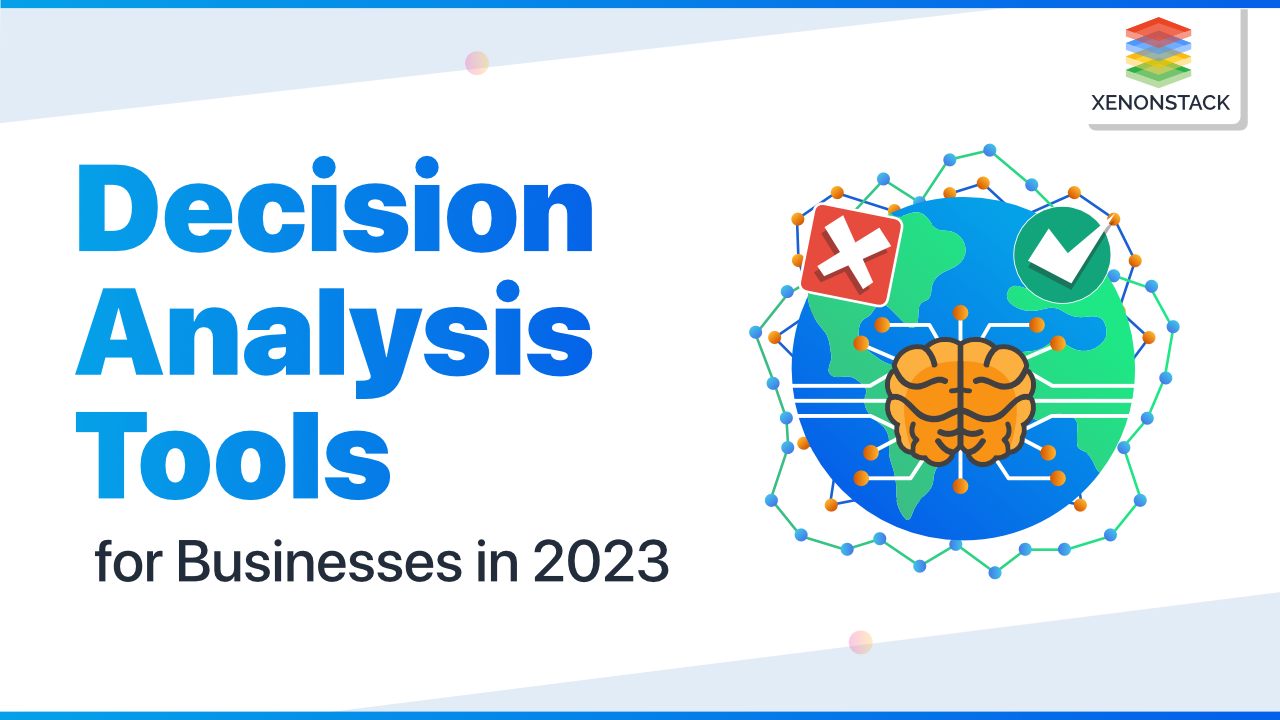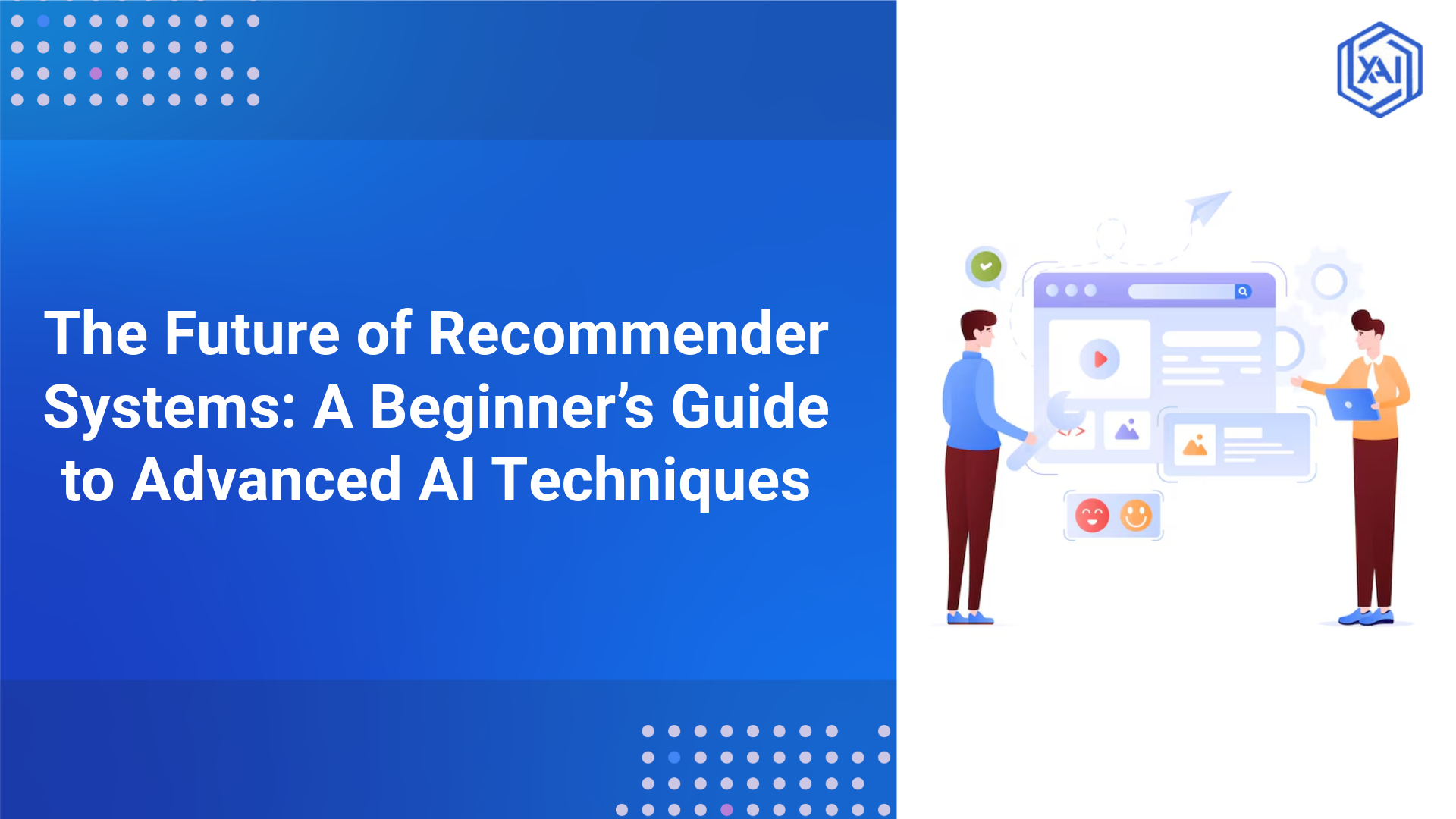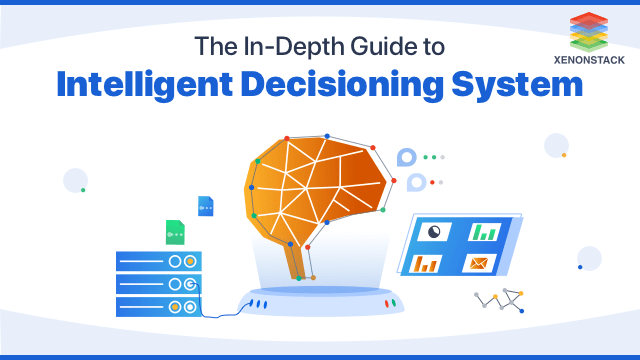
What is Decision Analysis?
A decision is an essential part that enables people to decide between two or more alternatives. The outcome must be associated with an incredible value and a certain degree of uncertainty or risk. Because of uncertainty, the decision-making process needs a high level of attention. So, it is a process to determine the pros and cons of all the possible outcomes and requires a finite number of alternatives for seeking information to reduce or eliminate risk. The decision-making can be divided into seven steps. As we can see, the image is the structure of the decision-making model.
What is Decision Analysis Model?
A decision analysis model is a tool that helps to formalize the decision-making process by breaking it down into smaller steps and considering all relevant factors and uncertainties. The model typically involves identifying the decision that needs to be made, defining the alternatives, specifying the criteria for evaluating the alternatives, assigning probabilities to uncertain events, and estimating the expected values of the alternatives. The model may also involve sensitivity analysis to identify which factors have the greatest impact on the decision, and scenario analysis to consider different possible futures.
Decision analysis models can be used in a variety of contexts, such as business, finance, engineering, and public policy. They can be helpful in situations where there is a need to make complex decisions, trade-offs are required, and there is uncertainty about the future.
Combining unstructured data and text analytics results with structured data for predictive analytics. Click to know about Data Intelligence Benefits and its Use Cases
Decision Analysis Techniques and Tools
Everyone wants to make good decisions for better and more effective outcomes. So, many different techniques and tools can be used to find a solution and map out all the possible alternatives to our decision and chances of success or failure. Organizations look to enrich their decision-making on every business level using decision-making tools. They choose the right decision-making tools based on their problem situations.
Key features of Decision Analysis Tools
When choosing the best decision-making tools for business or any other possible alternative scenario, we should look for the key features of the tools.
Scenario analysis: When the entry of a team member, the decision-making tool analyzes the relevant scenario and extracts historical data to guide employees toward a decision automatically. This is often used in self-service knowledge bases and helps employees recommend a product or service to new customers. More advanced tools will use this analysis to automate certain scheduling parts, such as sending contracts or approval requests.
Consensus Tracking: When decisions need approval from multiple people, it can be difficult to remember who provided feedback and who did not. Consensus tracking keeps a record of everyone who agreed to a decision and can send notifications to prompt those who haven't yet. This keeps organized projects better, but it also reduces delays resulting from waiting for approvals.
Cost-benefit Analysis: One of the most crucial factors of any decision is the budget. With cost-benefit analysis, decision-making tools can predict the likely savings or increase in revenue versus the cost of the decision to the organization. Cost-benefit analysis can help determine whether to move forward or not with their current course of action if they need to rethink their plan. Many different decision-making tools are available to help organizations among the alternatives and make efficient, informed, and effective business decisions.
SWOT Analysis
SWOT stands for Strengths, Weaknesses, Opportunities, and Threats. It is an essential part of any business and tactical planning. A SWOT analysis evaluates internal and external factors as well as current and future potential where the internal factors are Strengths and Weaknesses, and the external factors are Opportunities and Threats.
A SWOT diagram is especially useful when trying to decide whether or not to start on a movement or strategy by visualizing outlining any project's positives and negatives and making it easier to decide how to move ahead.
Strengths
It describes what an organization exceeds and differentiates it from other organizations: a strong brand, loyal customers, unique technology, and so on.
Weaknesses
What could we do better? These factors put us at a disadvantage over our competitors
and figuring out what the drawbacks are and taking actions to lessen them before they hurt
our business.
Opportunities
What are the opportunities available in our business? The opportunities such as market fluctuations and trends.
Threats
Determine the obstacles to achieving a goal and identify the primary threats to any organization.
In SWOT analysis, the strength for one issue might be a weakness for another, and identify all gaps that could not be a business opportunity.
Create is an online SWOT analysis tool that collaborates organization strategies in real-time.
Deep learning algorithms can give outputs with more precise and accurate results. Click to explore, Deep Learning Challenges and Solutions
Decision Matrix
A decision matrix is a tool that can be used to provide clarifying information when dealing with choices and variables. When we have a list of options but are reduced to one choice, that time decision matrix can help solve our problem.
The decision matrix are two types-
Simple Decision matrix
In this matrix table, a list of options is available, and choose a way to score each option in case of the evaluation criteria. But, a Simple decision matrix does not have the same importance as every criterion. This is the drawback of the Simple Decision matrix.
Weighted decision matrix
In the Weighted decision matrix, the leftmost column is the criteria column same as the Simple decision matrix. But another column specifies the weight of the criteria (relative importance).
Decision matrix analysis helps to make a rational decision from several similar options, and this tool ensures all essential factors have been calculated before an option is selected.
Pareto Analysis
Pareto analysis is another decision-making tool that helps choose the suitable action when many options are available but aren’t sufficient resources to track all options.
Pareto analysis is also called ‘The 80/20 rule.’ The 80/20 rule seeks to identify 80% of results from 20% of work. But it must work in a specific condition named factor sparsity (limited resources).
Pareto analysis helps business leaders and stakeholders to improve their organization by identifying the root problems and opportunities.
Step to create a Pareto Chart
- Find the total of data that affects each contributor.
- Re-order the contributors by descending form.
- Identify the cumulative percent of the total.
- Draw the label (horizontal and vertical axis).
- Draw bars to represent the magnitude, cumulative-percent and analyze the diagram
Pareto Analysis requires the right source of information. Pareto analysis helps break a big problem into smaller pieces, identify where to put efforts, and guide in better usage of resources.
Visual Paradigm is another tool that helps input our data in Pareto charts easily and generates a chart from data. In real life, this tool is not only used for Pareto analysis but also as a suite of design, analysis, and IT project development.
An automated copy of an object in the real world, such as wind farms, jet engines, or other larger items, such as whole cities or buildings. Click to explore, Digital Twin in Industry 4.0
PEST Analysis
PEST Analysis (Political, Economic, Social, and Technological) is a technique by which an organization can evaluate the main external factors affecting its business to become more competitive in the market. PEST analysis provides a view of macroeconomic factors that might affect an organization and decides which opportunity is the right choice that makes for faster growth.
The company's environment consists of three levels. These three levels are the Internal environment, Microenvironment, and Macroenvironment.
- Internal environment: consists of factors internal to the organization, like employees, assets, technology systems, etc.
- Microenvironment: These are factors outside the organization but are still very closely related to the organization. So, these are suppliers, buyers, competitors, subcontractors, etc.
- Macroenvironment: These factors influence an organization, but the organization itself has no control over them. These are political, economic, social, and Technological factors.
- The PEST analysis describes the macro level of any organization.
- Political factors: the politics and actions of the government have a huge impact on how businesses conduct themselves.
- Economic factors: understand the economic factors of the country, such as shifting demographics, the fiscal policy of market demand, interest rest, and how infrastructure is improving.
- Social factors: various activities like career expectations and educational levels can facilitate changes in areas linked as subpar.
- Technological factors: there are big technological shifts. But day by day, rapid technological change has impacted many businesses, the industrial revolution, and technology.
PEST analysis aims to identify the factors that may change in the future and develop a better strategy in the long term. Understanding the overall market environment helps to make good planning and decision-making.
In PEST analysis, we can use the Creately tool. This tool offers useful drawing features that are easy to use and understand for every customer and stakeholder.
What is Decision Analysis Process?
Decision analysis is a systematic approach to evaluating and comparing alternative choices in order to make the best possible decision. It involves the following steps:- Define the Problem: Clearly identify and describe the problem that needs to be solved or the decision that needs to be made.
- Identify the Decision Criteria: Determine the factors that are important in evaluating the alternatives, such as cost, risk, and benefits.
- Develop the Alternatives: Generate a list of potential options or courses of action that could address the problem.
- Evaluate the Alternatives: Assess each alternative based on the decision criteria and determine the pros and cons of each option.
- Compare the Alternatives: Compare the alternatives against each other and determine which one is the most favorable based on the evaluation.
- Select the best Alternative: Choose the alternative that is the most feasible and has the highest expected value.
- Implement the Decision: Put the chosen alternative into action.
- Review and Monitor Monitor the outcomes of the decision and review the process to see if there are any lessons that can be learned for future decisions.
Conclusion
There are so many tools that organizations use to make effective decision-making. As mentioned above, decision-making techniques and tools provide a better choice for making more profits and customer retention in an organization. If any organization tries to find out the best strategy for the business at that moment, these tools help to fast and better-informed decision making.
- Read more about Retail Site Selection with Decision Analytics
- Explore about Decision Analytics for House Location Selection


